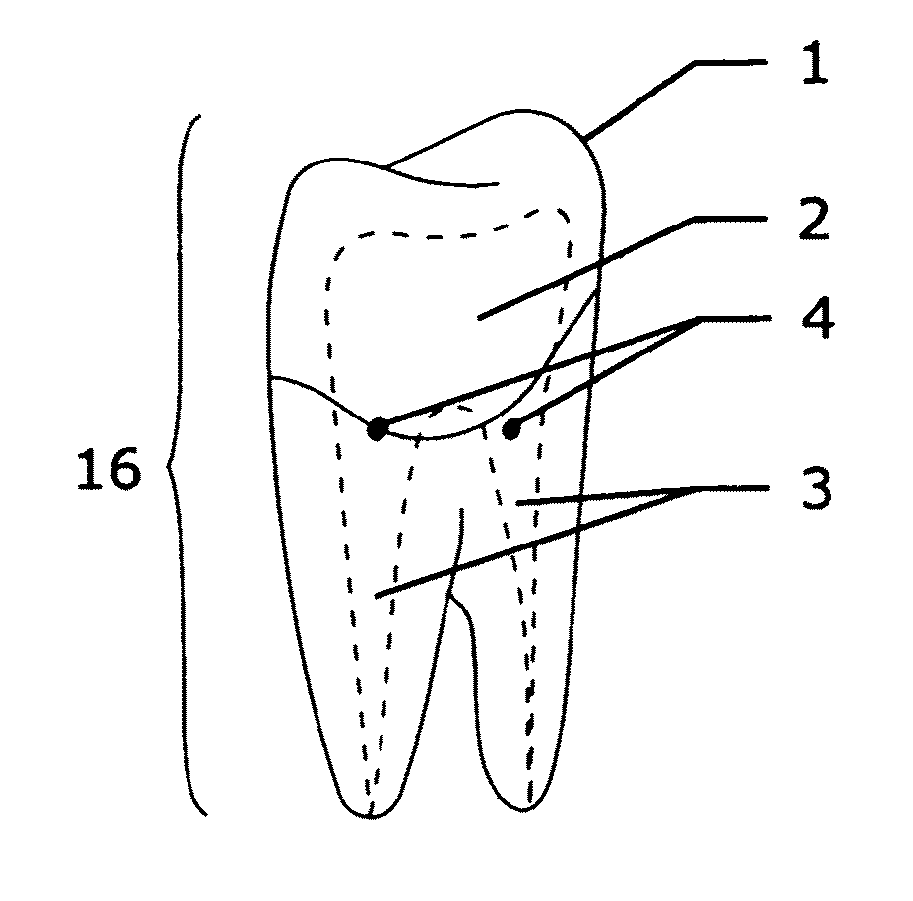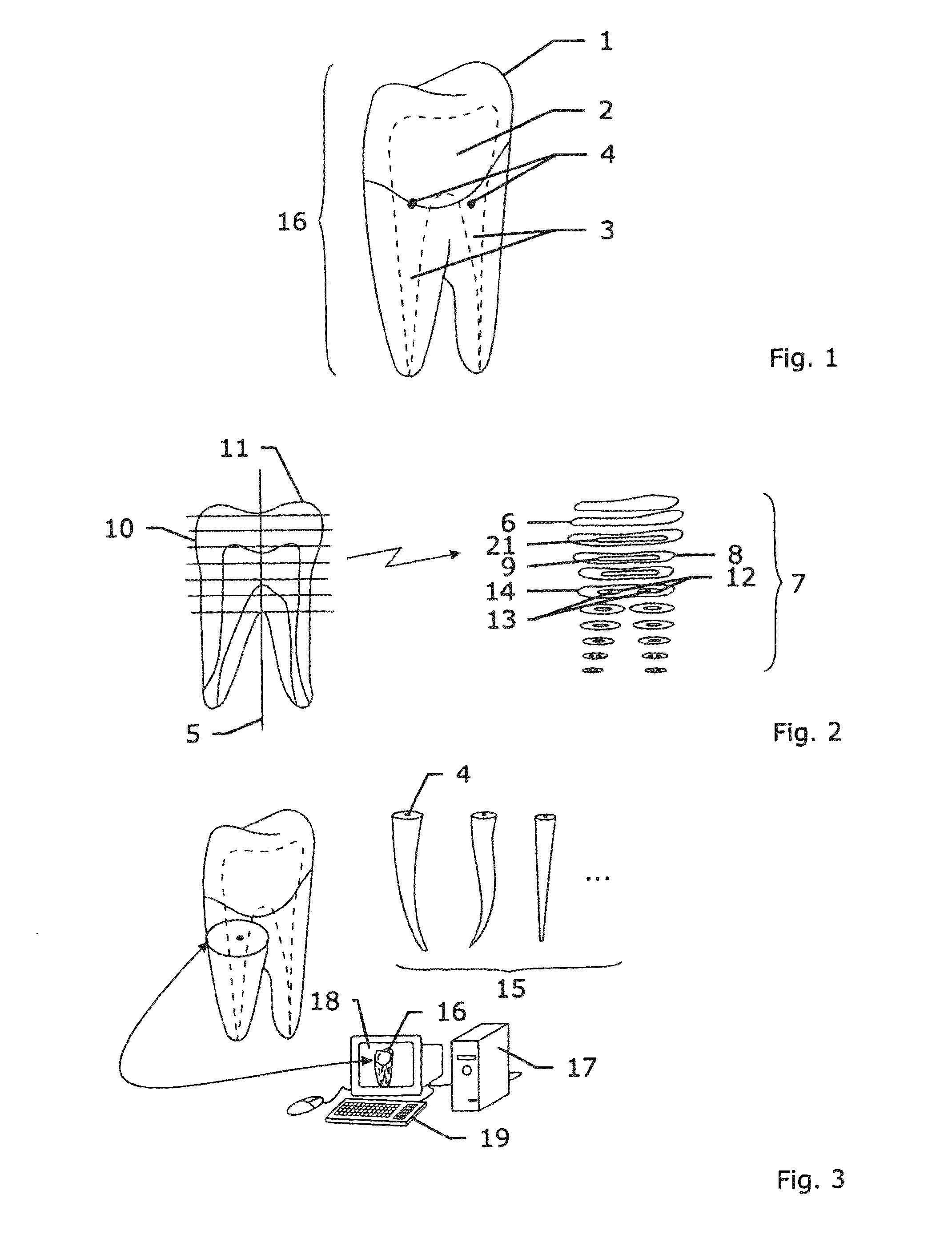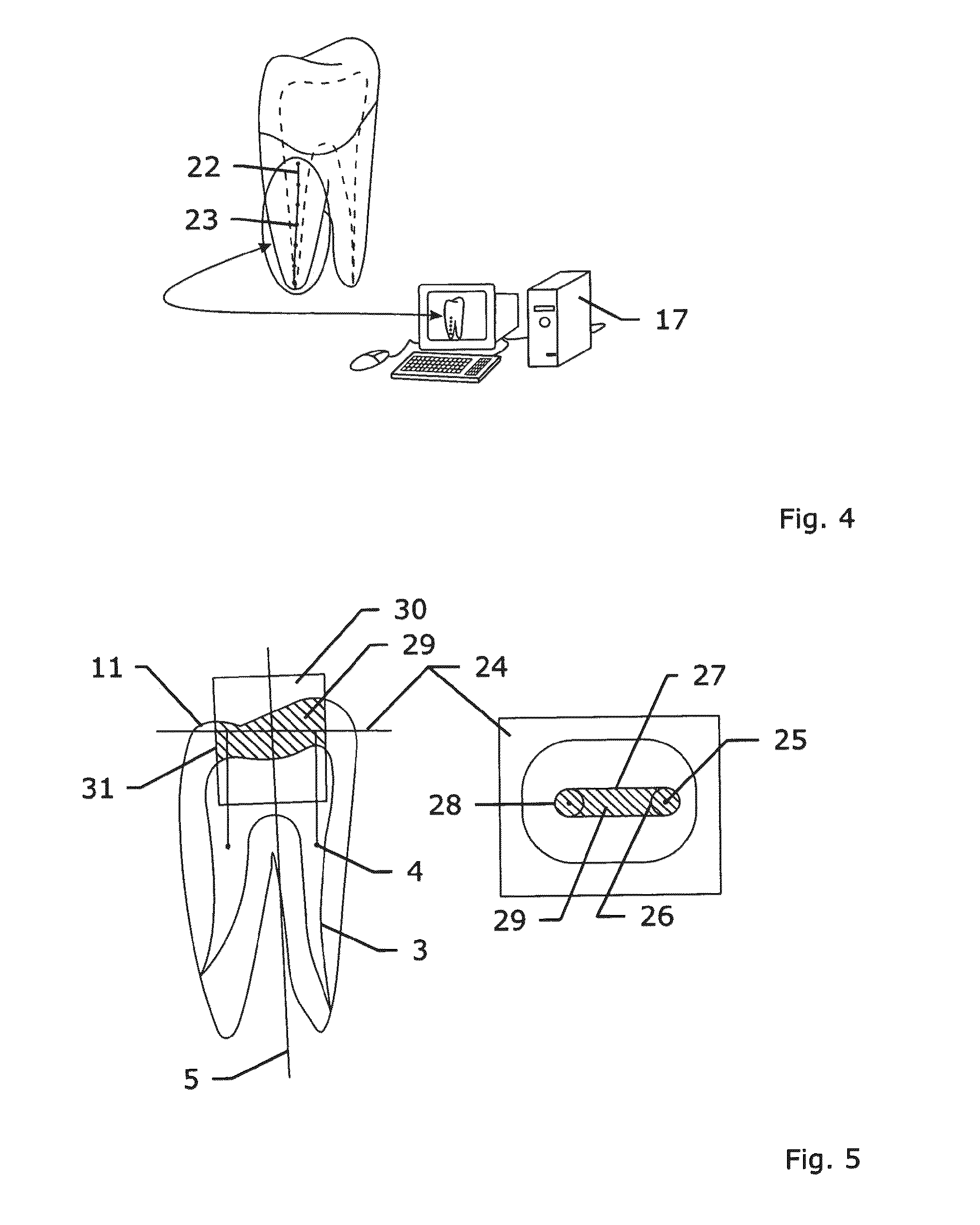Method and system for establishing the shape of the occlusal access cavity in endodontic treatment
a technology for occlusal access and endodontic treatment, which is applied in the field of method and system for establishing the shape of the occlusal access cavity in endodontic treatment, can solve the problems of improper preparation, affecting the healing effect of endodontic instruments, and reducing the healing of retained endodontic instruments, so as to achieve minimal bending of endodontic instruments, easy preparation, and saving chair time
- Summary
- Abstract
- Description
- Claims
- Application Information
AI Technical Summary
Benefits of technology
Problems solved by technology
Method used
Image
Examples
Embodiment Construction
[0032]The present invention will be described with respect to particular embodiments and with reference to certain drawings but the invention is not limited thereto but only by the claims.
[0033]According to a preferred embodiment of the invention a three-dimensional computer model (16) of the tooth (1) including the pulp chamber (2) and the root canals (3), is required and obtained. Tooth enamel, bone and soft tissue are visible. The method starts when said three-dimensional computer model (16) is available. In a first subsequent step, the locations of the root canal orifices (4) (relative to the tooth's occlusal surface) are extracted from the computer model (16) of the tooth (1). According to one approach, this step is fully automated. As an example, the automation consists of the following sequence of actions performed by the system (17). First, the apical-coronal (longitudinal) axis (5) of the tooth (1) is determined. This can be done e.g. based on the calculation of the princip...
PUM
 Login to View More
Login to View More Abstract
Description
Claims
Application Information
 Login to View More
Login to View More - R&D
- Intellectual Property
- Life Sciences
- Materials
- Tech Scout
- Unparalleled Data Quality
- Higher Quality Content
- 60% Fewer Hallucinations
Browse by: Latest US Patents, China's latest patents, Technical Efficacy Thesaurus, Application Domain, Technology Topic, Popular Technical Reports.
© 2025 PatSnap. All rights reserved.Legal|Privacy policy|Modern Slavery Act Transparency Statement|Sitemap|About US| Contact US: help@patsnap.com



